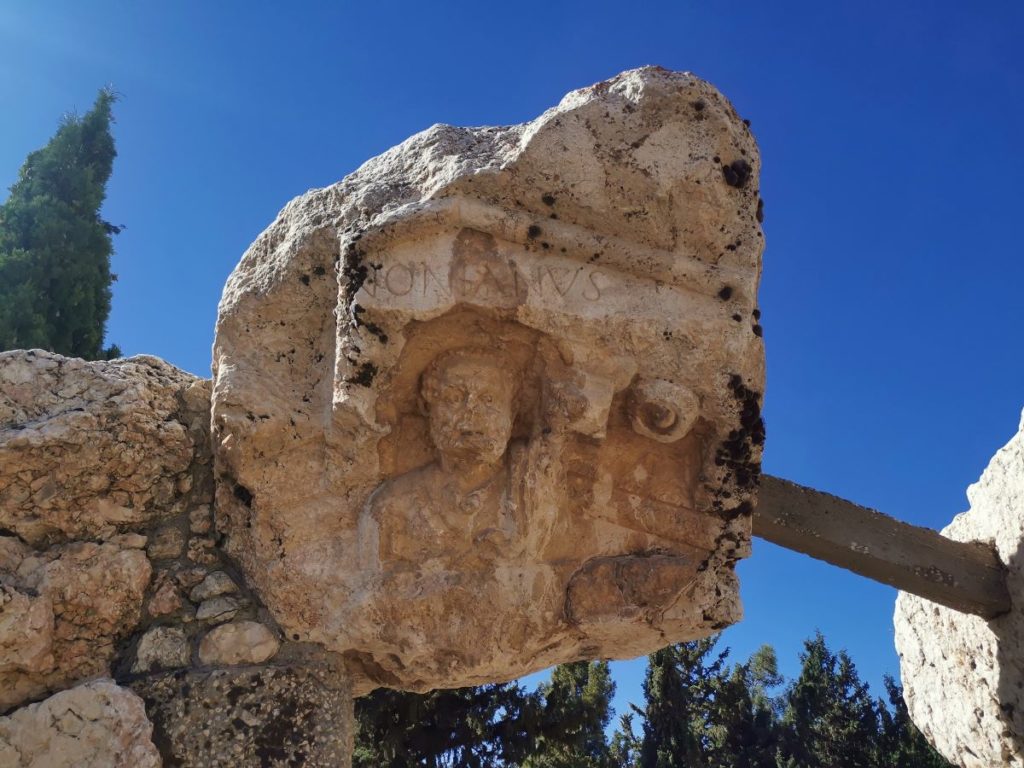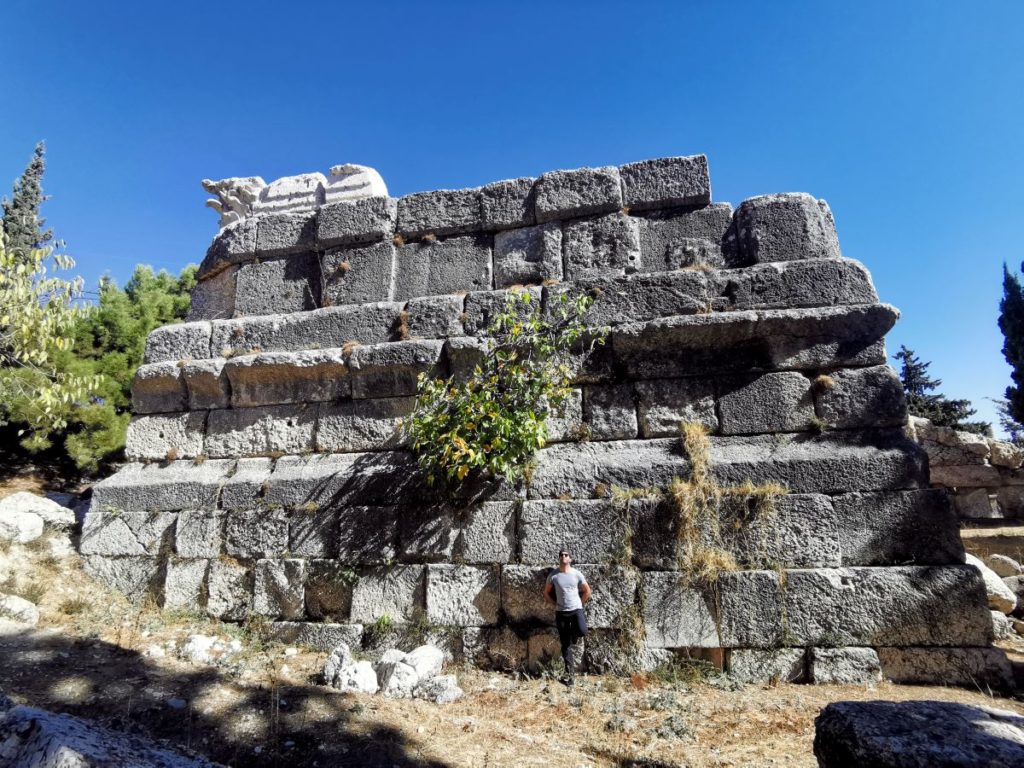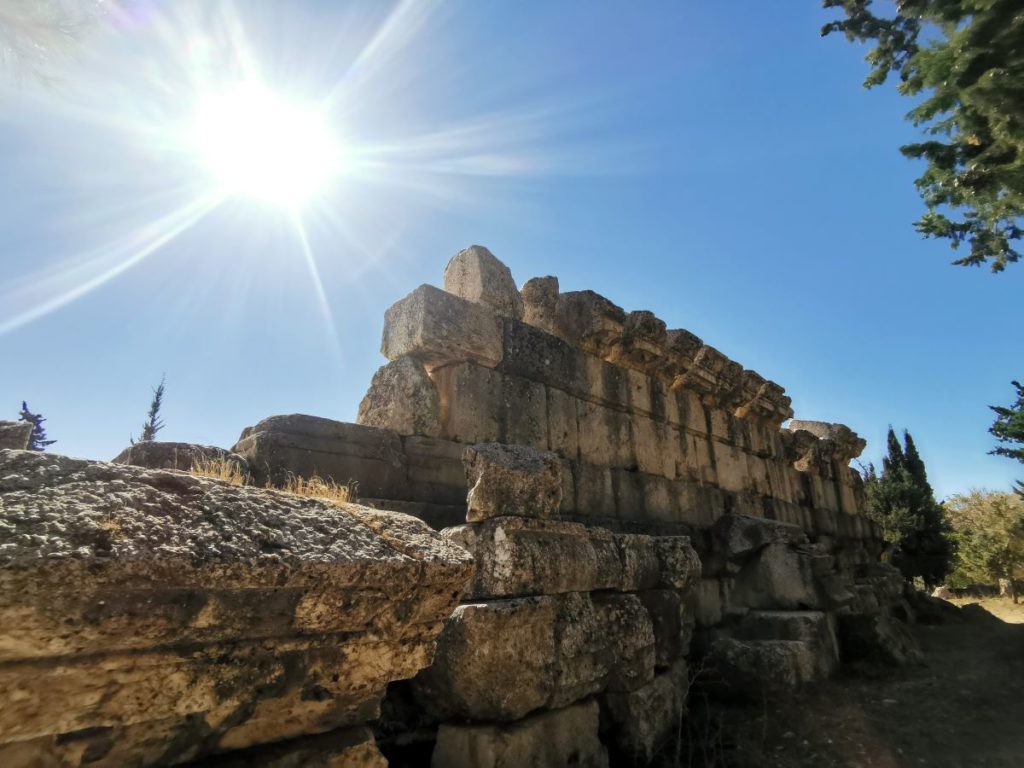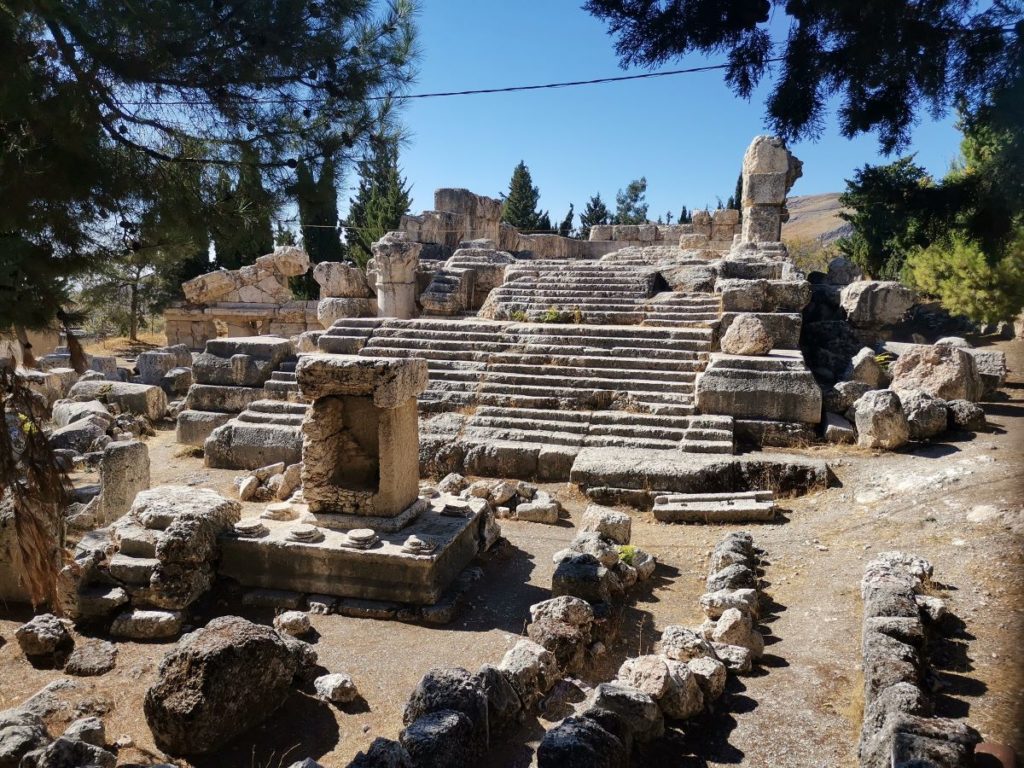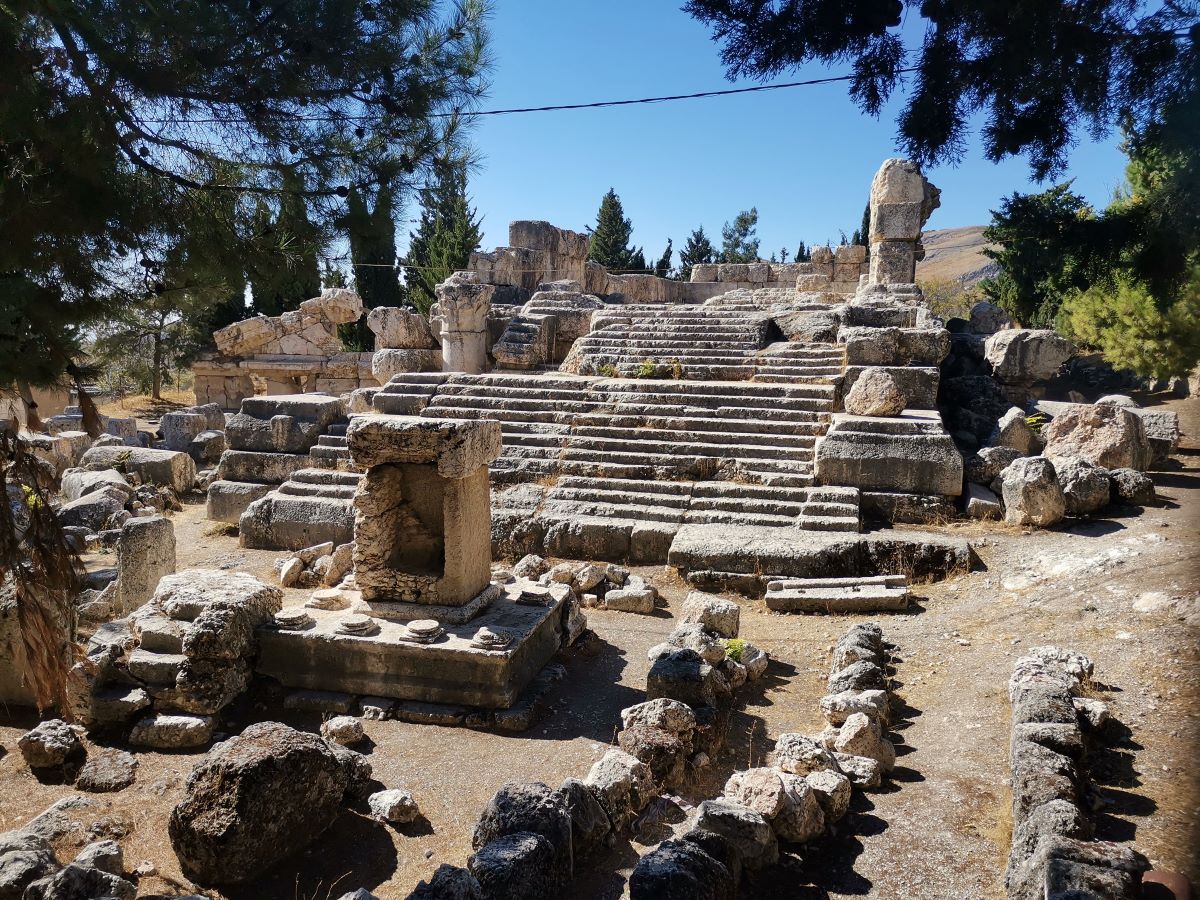The village of Qsarnaba houses a temple built during the Roman period.
In 1903, during the first exploration of the German mission, houses were installed in the cella (sacred area) of the temple. Between 1933 and 1993, the edifice underwent extensive restoration works.
Toponym
Qsarnaba is locally known as Qasr El Banat – The Castle of Women. Local tales consider that this place housed virgins during the Roman period. However, this theory remains debatable.
Structure
The temple was built on a rather high platform, so that a visitor had to climb an unusually long flight of stairs to reach the cult room. It rests on a massive rectangular foundation over 35m long and about 15m wide.
Open to the east, it has a hexastyle prostyle plan (temple featuring columns at its front façade) and Corinthian order, comprising a pronaos (entrance chamber) and a cella (sacred area) at the bottom of which theplatform of an adyton (sacred room inside the cella) surmounts a crypt.
At the entrance staircase, a monumental altar with small columns partially carved into the rock can be noticed. Two flights of stairs separated by a paved landing and carved from megalithic blocks are integrated into the podium.
The entrance used to have an immense pediment – the triangular upper part of the front building, typically surmounting a portico. The pediment is located today at the east side of the temple – it bears a high relief representing the bust of a bearded male figure, dressed in a tunic, provided with a sprinkler and surmounted by an inscription. Scholars propose to consider this character as the temple priest, named Nonianus.
The exterior facing of the walls are adorned with lion reliefs, symbolizing power and strength.
The deity venerated at the temple is unknown.
Karim Sokhn
Tour Operator & Tour Guide
References:
https://www.livius.org/articles/place/qsarnaba/
Julien Aliquot, La vie religieuse au Liban sous l’Empire Romain, Julient Aliquot, 2009
